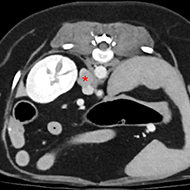75 per cent or more of a practices' profits are generated by drug sales as opposed to professional fees.
Falling client numbers, competition, and the internet all threaten consumable sales
The pricing strategy is the means by which a business calculates how much it will charge for its products and services, and it determines the business's profit.
Profit was the theme of Alan Robinson's lecture during the Management Session at BSAVA Congress.
Alan explained that veterinary practice actually consists of three businesses and each has a different pricing strategy:
1. Clinical services that are time-based with high fixed costs and are therefore high cost and low volume
2. Preventative health care - a high volume low value service which requires very competitive pricing
3. Retail business, which has 3 mark-ups applied to most products: the percentage mark up to the list price cost of products, the premium pricing mark-ups applied to list price, and the fixed mark up which is the dispensing/injection fee.
75 per cent or more of a practices' profits are generated by drug sales as opposed to professional fees and, in some cases, the retail sales totally subsidise the clinical services provided by the practice.
Falling client numbers, more competition, The Marsh Report, and the internet all threaten consumable sales. In today's climate, clients are far more likely to compare pricing against their current source, challenge practices to match or reduce prices to online level and switch to sourcing products online. Similalry, clients far more commonly compare their vet's knowledge with veterinary information they have taken from online sources, meaning that, as Alan said, ' vets are no longer the purveyors of information but the curators.'
The result of all of these factors is that veterinary practices are losing profit and also the goodwill of clients.
At the same time, drug inflation is at 5.1 per cent and the general economic climate is poor. This leads to veterinary expenses being an increasing percentage of clients income - hardly surprising then that pet owners will search online for better deals.
The answer, says Alan, is not for practices to try to compete with the online pharmacies - which have low cost, high volume, deep pockets and thin margins. Practices have high cost, low volume, small pockets and thin margins!
New and mixed pricing strategies are required with proactive pricing in line with online pharmacies. On key ranges, not price matching.
Alan suggested that having variable mark-ups was a good strategy, but to do this practices need to understand true net costs, not just list prices and competitor pricing.
Profit expectations need to be re-evaluated and differentiation in pricing for same product between short and long-term medication considered so that the price of the drug used for short term treatment would be higher than the cost of the same drug used for long term medication.
The future may well bring reduced pricing and profitability in some areas and drug ranges, but the benefits will be the retention of client goodwill.







 RUMA CA&E has extended the deadline for its online survey into vaccine availability.
RUMA CA&E has extended the deadline for its online survey into vaccine availability.
